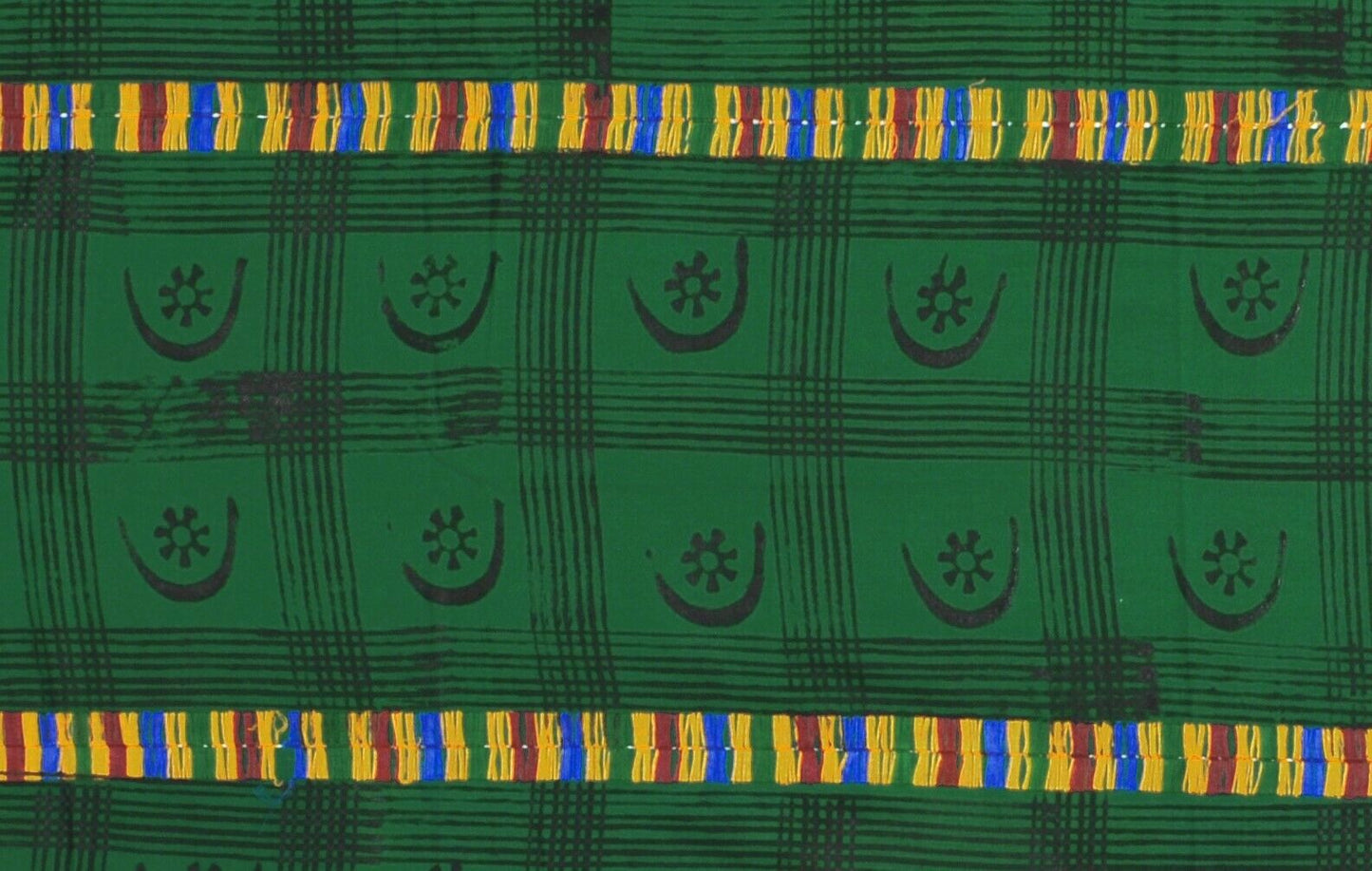Tribalgh
Hand Stamped Adinkra Cloth – Vintage 1980s Woman Size, 64″×41½″
Hand Stamped Adinkra Cloth – Vintage 1980s Woman Size, 64″×41½″
Item number:
SKU:SD-30991
Check shipping cost
Check shipping cost
Standard shipping cost for this item is $ 9.95
Insured "AIR MAIL" anywhere in the world.
Delivery time for Europe is 7-14 working days.
Delivery time for USA and the rest of the World is 14-21 working days.
We combine shipping on multiple purchases!
DHL option available for faster delivery ( 2 - 4 working days ) to all over the world.
During your checkout you will be able to see cost and select DHL option.
FREE upgrade to DHL for orders over $ 200
Couldn't load pickup availability
Hand Stamped Adinkra Cloth – Vintage 1980s, Woman Size (64″ × 41½″)
This authentic, vintage Adinkra cloth dates back to the 1980s and was hand stamped and hand painted in Ntonso, Ghana by skilled artists using calabash-carved Adinkra symbol blocks. It has been expertly embroidered together and remains in very good condition, with only minor stains and gentle wear that reflect its age and meaningful use.
- Size: 64″ × 41½″ (162 cm × 105 cm)
The artisan used a variety of traditional Adinkra symbols, each stamped in natural dye made from the bark of the badie tree, boiled with iron slag for 3–5 days to achieve its deep, earthy hue. This cloth is a testament to Ghanaian artistry and cultural pride.
Historical and Cultural Significance
Adinkra cloths have been cherished in Ghana for centuries, particularly among the Akan and Ashanti people. These cloths are never handwoven they are always hand stamped with symbols that convey wisdom, proverbs, status, and values.
What are Adinkra cloths? Adinkra cloths are ceremonial textiles adorned with special symbols. The symbols are carved into calabash stamps and hand pressed onto cloth using natural dyes.
Adinkra symbols and meanings: Each symbol has a rich meaning. For example, Gye Nyame represents the supremacy of God, Sankofa emphasizes learning from the past, and Duafe signifies beauty and cleanliness.
Colors and materials: This cloth uses a deep brown-black dye derived from badie tree bark. Cloths may otherwise be dyed in red, yellow, or other natural hues depending on materials and symbolism.
Traditional production: Stamping blocks are carved from calabash gourds. The dye is prepared by boiling bark with iron slag for several days until thick. Artisans hand stamp the design by hand painting and embossing each symbol.
Ceremonial use: Among the Ashanti people, Adinkra cloths are worn at funerals and celebrations. This vintage “woman” size cloth would have been draped elegantly at such occasions, symbolizing respect, grief, or joy.
Historical origin: According to legend, Nana Kofi Adinkra was a king of Gyaman (modern Ivory Coast) who was defeated by Asantehene Bonsu-Panyin. He wore patterned cloth in sorrow, inspiring the Adinkra tradition. The name “Adinkra” comes from him, and the cloths are said to carry the spirit of his story.
This cloth is not handwoven, it is hand stamped, hand painted and hand embossed. Its vintage nature and careful preservation make it a rare and meaningful piece of cultural art from Ghana.
Explore more from TribalGH:
Share




